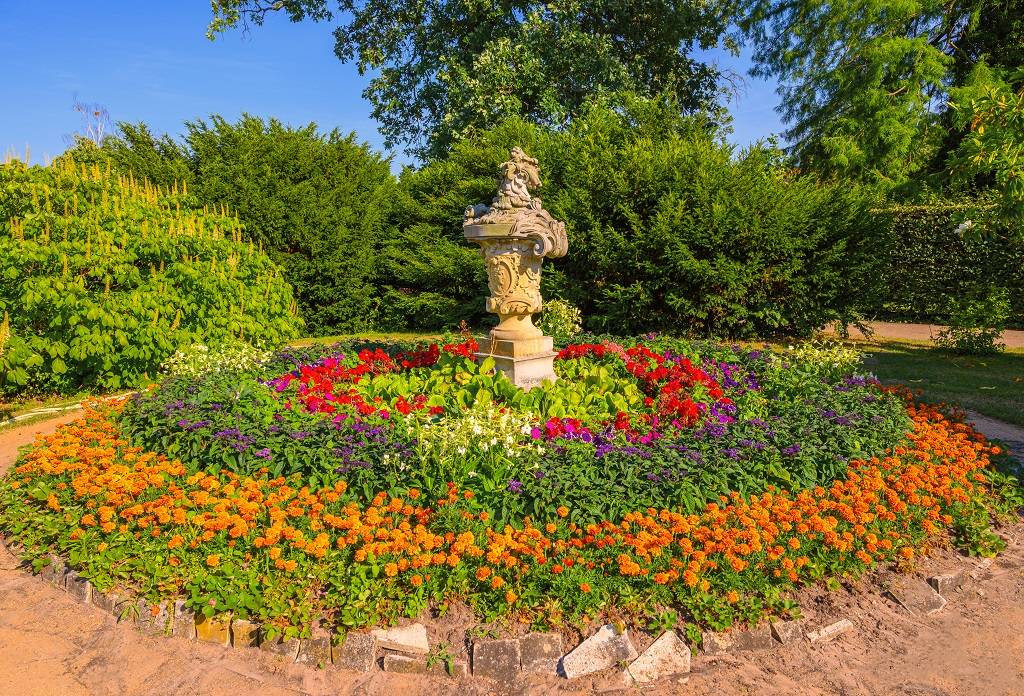Mosigkau Castle and Park

Schlossentré
Anna Wilhelmine, the favorite daughter of Prince Leopold I of Anhalt-Dessau, commissioned the Mosigkau Palace in 1752. The first designs for it probably came from the architect of Sanssouci Palace, Georg Wenzeslaus von Knobelsdorff, but the unmarried princess herself helped to decorate the house with great skill and sensitivity. The highlight of the Rococo ensemble is the Garden Hall. It contains a section with baroque paintings, whose arrangement is almost completely preserved – a rarity in Europe. Among them are remarkable works by Flemish and Dutch masters, including Anthonis van Dyck, Peter Paul Rubens and Jan Brueghel the Elder.

View of the castle park
The princess used her summer residence for cures prescribed by her doctor: water treatments, herbs and plenty of exercise. She also often received visitors. It is said that a stay in Mosigkau, comprising dinners, promenades and art, is always a special experience. Contemporary visitors can evaluate the experience firsthand.
In her last will, the lady of the castle stipulated that a convent for noble unmarried women was to be established in the castle. The convent existed from 1780 until 1945.

